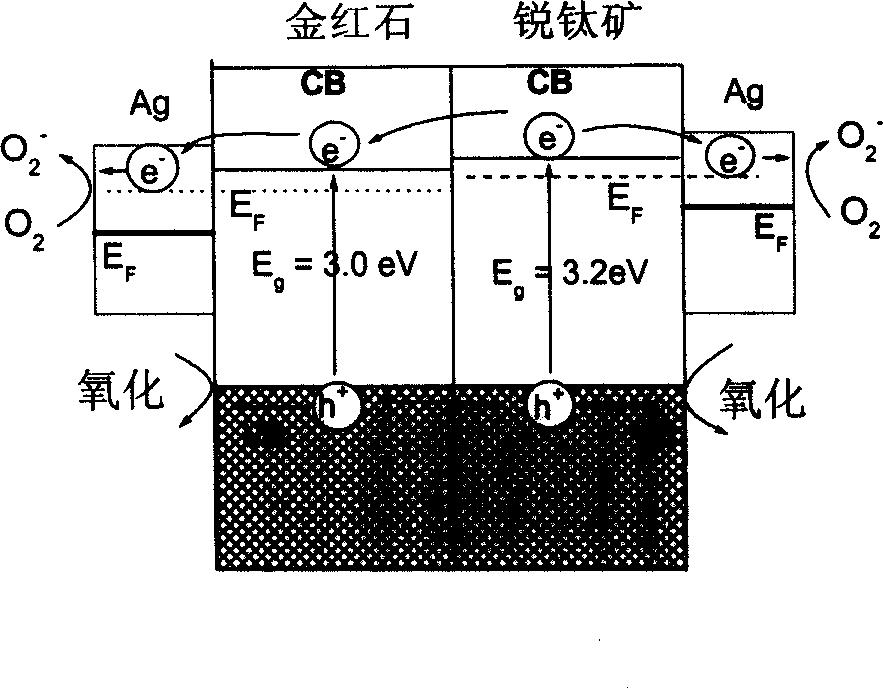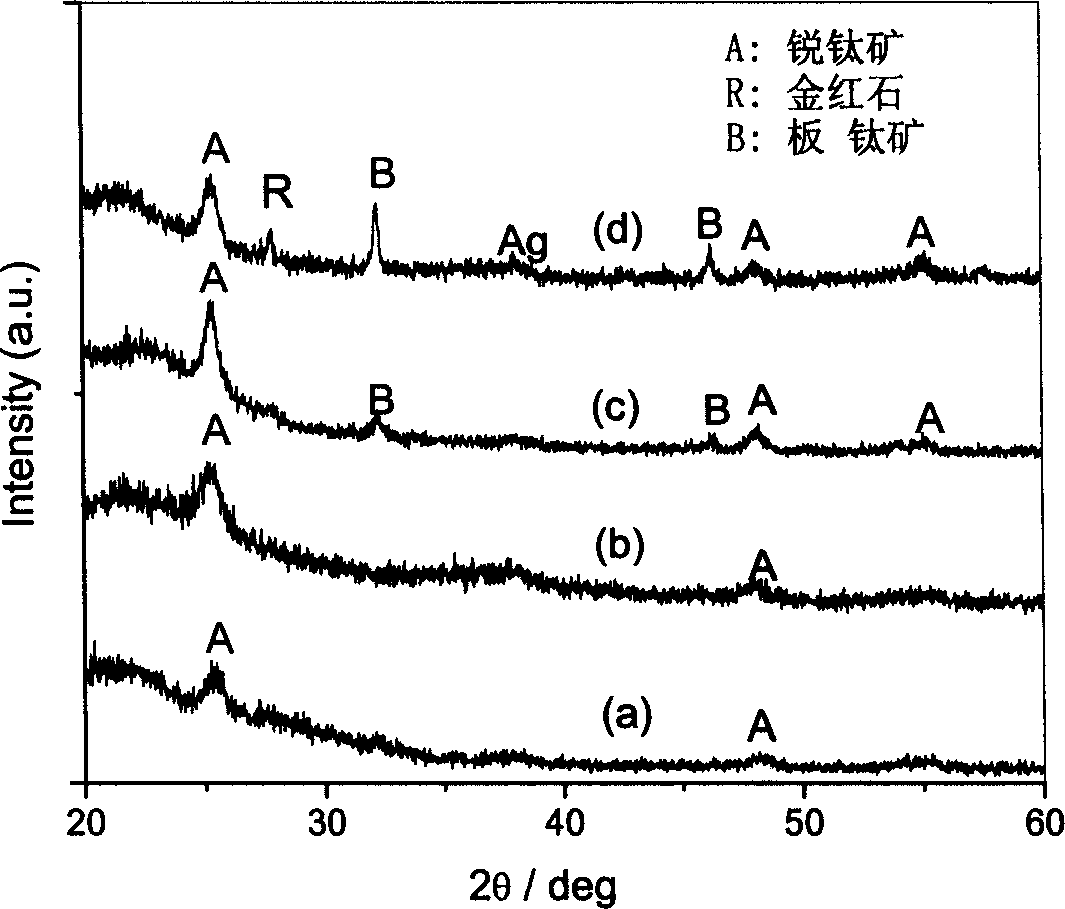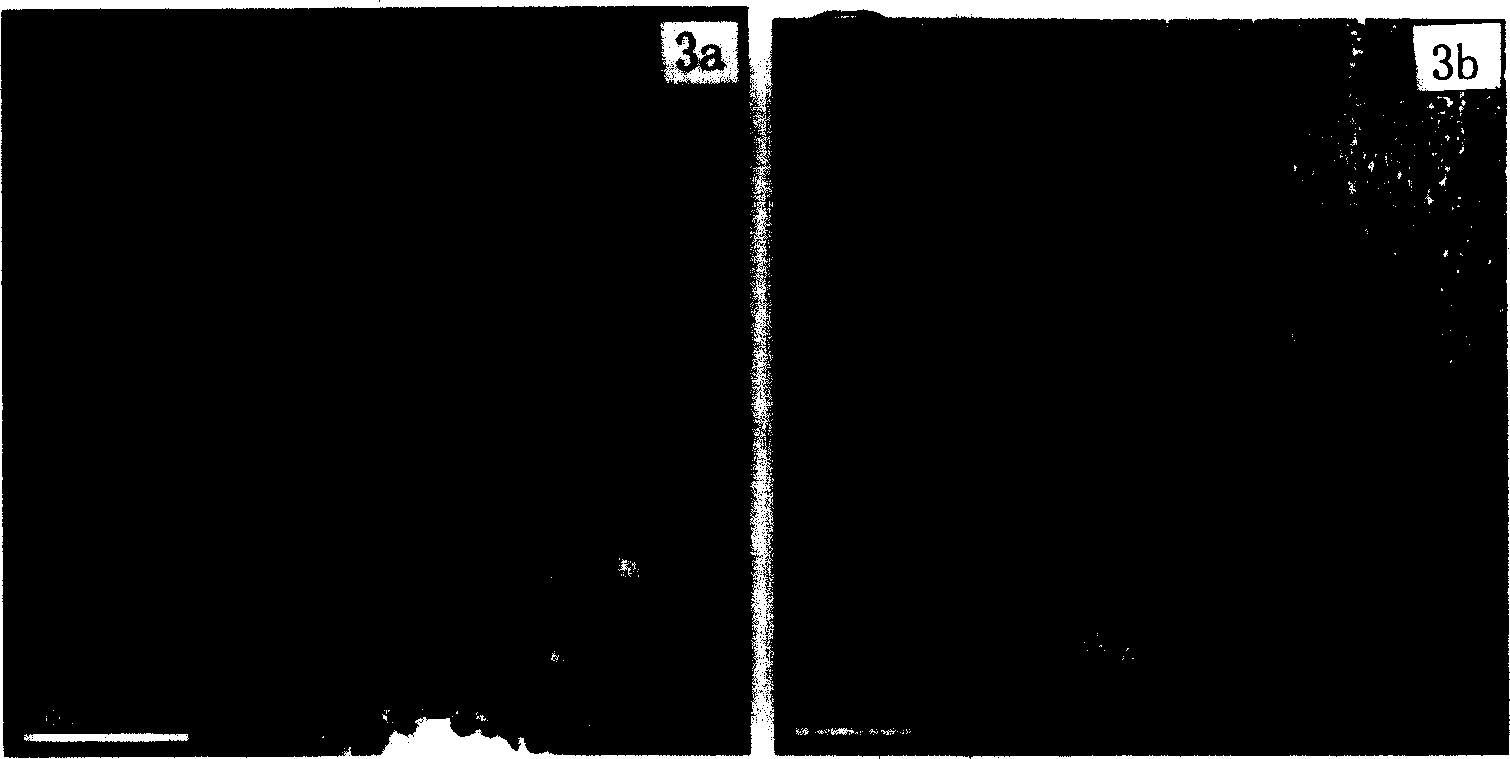In-situ preparation of Ag and TiOz multi-phase nanometer crystal composite thin-membrane light catalyst
A composite film, photocatalyst technology, applied in catalyst activation/preparation, chemical instruments and methods, physical/chemical process catalysts, etc., can solve the problems of difficult separation and recovery of powder, secondary pollution, etc.
- Summary
- Abstract
- Description
- Claims
- Application Information
AI Technical Summary
Problems solved by technology
Method used
Image
Examples
Embodiment 1
[0040] Ammonium hexafluorotitanate, silver nitrate and boric acid are used as raw materials to prepare aqueous solutions of ammonium hexafluorotitanate, silver nitrate and boric acid respectively, and then the three aqueous solutions are mixed according to a set ratio, and the precursor solution is prepared after stirring evenly. The molar concentrations of ammonium hexafluorotitanate, silver nitrate and boric acid in the resulting final solution were 0.1, 0.03 and 0.3 M, respectively. At room temperature (25°C), immerse a clean quartz glass sheet in the prepared precursor solution and hang it vertically for 48 hours, then take it out and rinse it with distilled water, dry it, and then heat treat it at 500°C for 1 hour to obtain Ag / TiO 2 Nanocrystalline composite thin film photocatalyst, the photocatalytic test results show that the prepared Ag / TiO 2 Nanocrystalline composite films have good photocatalytic activity. Its apparent rate constant is 15.4×10 -3 (min -1 ).
Embodiment 2
[0042] In order to examine the effect of precursor concentration on film quality and photocatalytic activity, other experimental conditions such as reaction temperature and time, heat treatment temperature and time, etc. are exactly the same as in Example 1 except that the concentration of precursors is different. It was found that: when the molar concentrations of ammonium hexafluorotitanate and boric acid were too high, greater than 3.0 and 6.0 M, respectively, due to the high degree of supersaturation, homogeneous nucleation was the main form in the solution to form TiO 2 Precipitate, but can not form good TiO 2 film, when the film is heat-treated, TiO 2 It is easy to fall off from the surface of the substrate; on the contrary, if the molar concentration of ammonium hexafluorotitanate and boric acid is too low, lower than 0.01 and 0.03M, respectively, the solution is in a metastable state due to too small supersaturation and cannot form TiO 2 Precipitation or film. When t...
Embodiment 3
[0044] In order to test the influence of the ratio of molar concentration between boric acid and ammonium hexafluorotitanate on film quality and photocatalytic activity, except that the ratio of molar concentration between boric acid and ammonium hexafluorotitanate is different, other experimental conditions such as reaction temperature and Time, heat treatment temperature and time etc. are all identical with embodiment 1. It was found that when the ratio of the molar concentration between boric acid and ammonium hexafluorotitanate is less than 1, because the fluoride ions in the precursor solution cannot be effectively complexed, the film formation rate is slow, and the obtained film is very thin, and the film shows low photocatalytic activity. On the contrary, if the ratio of the molar concentration between boric acid and ammonium hexafluorotitanate is too high (when greater than 6), because the reaction rate is too fast, the formed film is easy to fall off after heat treatm...
PUM
 Login to View More
Login to View More Abstract
Description
Claims
Application Information
 Login to View More
Login to View More - R&D
- Intellectual Property
- Life Sciences
- Materials
- Tech Scout
- Unparalleled Data Quality
- Higher Quality Content
- 60% Fewer Hallucinations
Browse by: Latest US Patents, China's latest patents, Technical Efficacy Thesaurus, Application Domain, Technology Topic, Popular Technical Reports.
© 2025 PatSnap. All rights reserved.Legal|Privacy policy|Modern Slavery Act Transparency Statement|Sitemap|About US| Contact US: help@patsnap.com



